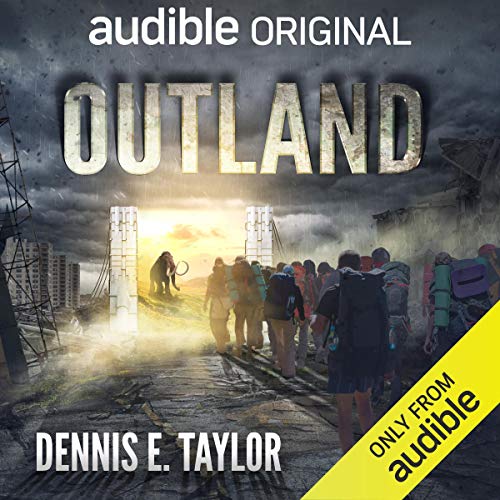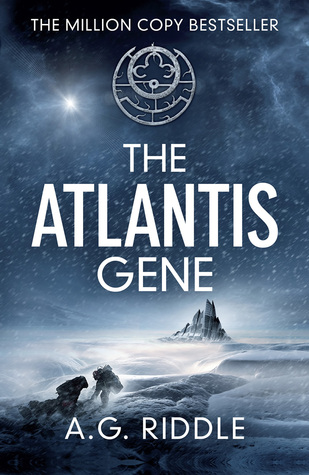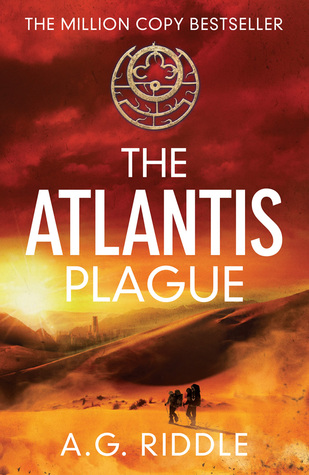Children of Ruin (Children of Time #2), by by Adrian Tchaikovsky, 2019
WE ARE GOING on an adventure. Maybe you’ve heard about it: someday soon, we’ll leave this planet, the one on which we were born, the only place we’ve ever lived and maybe the only place we can live, and we’ll journey out there into infinity. This will be hard, thrilling work, work that will herald new dangers that we cannot currently even comprehend, work that will allow the best angels of our nature to finally emerge. Colonizing the stars will abolish capitalism, end war, save our species from extinction, and make us immortal; perhaps it will even turn us into gods. This is the destiny of the human race. And it’s all just about to begin.
Adrian Tchaikovsky’s 2015 novel, Children of Time, begins with one fulfillment of that dream. We begin as humanity is making its first furtive steps to the stars; in orbit around a distant planet, an advance party of scientists led by radical biologist Dr. Avrana Kern considers the terraformed world beneath their station. The world is one of the very first to be transformed for human use. Indeed, with the help of a special retrovirus Kern has developed, it is even being seeded with apes who will rapidly evolve to be servants of the first human colonists when they arrive on the planet decades from now. The table for transcending the bounds of Earth is set. But something goes wrong: a terrorist cell embedded within the mission reveals itself, sabotaging the station and causing its monkey payload to plummet to the planet, burning up on entry. Kern alone manages to get to a life raft, which puts her body to sleep and uploads a copy of her consciousness to a computer while she waits for rescue.
In fact the terrorists, opposed to both artificial intelligence and the uplift of nonhuman species to sentience on the grounds that the universe belongs to humans and humans alone, are more faction than mere cell. A civil war erupts across human civilization between the humanists and the transhumanists, crashing the extrasolar colonization project and indeed technological human civilization as such. When the ark ship Gilgamesh returns to Kern’s World 2,000 years later — built by the bedraggled descendants of the Old Empire on a brutalized, ravaged, and poisoned Earth, who have hacked together advanced spacefaring technology from the ruins without being able to understand or replicate it — they are the last survivors of the human race, seeking the only place in the universe humans might be able to live. And Kern’s World is that place: successfully and stably terraformed, humans can live there in the open air unaided, our last refuge in all the universe.
Except the whole place is now overrun with superintelligent giant spiders, who were infected with the uplift virus after the accident and have built their own civilization in the meantime — and who are protected from orbit by the immortal computer intelligence of Avrana Kern, who has determined in the intervening centuries that she likes the spiders better than people.
¤
Incandescently brilliant in its transformation of the classic motifs of space opera, Children of Time was without any hesitation or qualification one of the most enjoyable science fiction novels I have read in years. So I approached Children of Ruin with some trepidation, worrying that no sequel could possibly live up to the pleasure I derived from Tchaikovsky’s first “Children of” novel. Of course, there was no need to worry: cleverly remixing his core plot elements without breaking his rules or announcing heretofore unheard-of new ones, Tchaikovsky arranges for a new narrative situation that parallels the structure of the first book while deeply complicating its thematic coordinates and delving into entirely new dimensions of cosmic horror. In short, like its predecessor, it’s also great. I now await the publication of the third book with severe trepidation.
The surprise resolution of Children of Time saw the war between the humans and the spiders end with the infection of the desperate and barbarous human remnant with the uplift virus, an event which altered their thinking enough to allow them to see the wisdom of peace. In the epilogue, we saw that the humans and the spiders now live together, still under the watchful eye of the computer version of Avrana Kern (who has long abandoned primitive digital computing for the spiders’ ant-based technorganic cloud); a human-spider crew have set out on a new starship running an instance of Kern as its operating system, the Voyager, toward a distant star where an Old Empire signal has unexpectedly been detected. Children of Ruin tells the story of this distant solar system, designated Tess 834 in the Old Empire astronomical database, where a terraforming crew arrived from Earth around the same time Kern reached Kern’s World.
With instructions to terraform one of the planets in the system, the crew surveys both Tess 834g and 834h and discovers that while Tess 834h is the better candidate for human settlement, it already has life — and the conservationist captain won’t allow himself to perpetrate biocide on a planetary scale. So the team splits up: part goes to the icy Tess 834g to attempt to melt its water and create some possibility for a human outpost for potential future colonists, while the remainder stays in orbit around 834h to explore its biome. Light-years from Earth, they monitor the worsening political crisis between the humanists and the transhumanists until the day comes that they receive a signal (sent by one of the two factions) that crashes their computer systems and kills half the crew; no subsequent signals from Earth are received afterward.
While the last scientist on the Tess 834g team continues the terraforming mission — planning to do with uplifted octopuses what Kern had sought to do with monkeys — the crew at Tess 834h suffers another setback: one of the explorers on the surface is stabbed by one of the sea turtle–like creatures native to the world and infected with an unusual sort of exoplanetary virus that infects his corpus callosum and hijacks the executive function of his brain. The virus quickly spreads to other members of the Tess 834h complement; the virus has a sort of hive-mind consciousness that can instance itself in any organic matter it encounters, constantly budding off and remerging into different fragments of a singular gestalt “We.” If the first book was Battlestar Galactica meets Arachnophobia, in this one we find ourselves unexpectedly in something like Invasion of the Body Snatchers meets Alien, as more and more of our crew are infected by the entity and become a new part of its ineffable, inhuman We.
The entity had never conceived of outer space, or indeed of any sort of life it hadn’t already infected and incorporated into itself; the idea of more, filtered through both its biological urge to spread and its new access to human intelligence and technological acumen, is utterly intoxicating. It simply cannot think to do anything but spread itself to every point in the universe, see everything, taste everything, turn every last available molecule into a version of itself. Indeed, nothing could be more important. The entity is nonverbal and nonlingual in its natural state on Tess 834h, having no need for communication when its own mind was so undivided; having infected members of the crew, it struggles to communicate this fierce, unquenchable need in words and terms that humans might understand. The best it can do to explain its new destiny is to repeat, with each new crew member it infects, a singular totemic mission statement: “We are going on an adventure.”
¤
It was Mark Bould who noted of Star Trek: The Next Generation’s Borg that their “relentless drive to assimilate all other species into their collective is either opposite to, or exactly the same as, the goal of the Federation.” In Children of Ruin, we see that fundamental contradiction with new clarity; the Tess 834h entity’s desire to “annex the planets” (as ur-imperialist Cecil Rhodes once proclaimed) is indistinguishable from the imperial drive that three times now has caused the humans of the Children of Time universe to launch themselves from a safe home into the cold, unfeeling void of the universe — and yet in the entity we can immediately recognize the horror in this spirit of adventure. With the Tess 834h crew all dead, the infected captain of the mission heads toward 834g to spread the entity to its last survivor and his octopuses — but the shuttle is able to be blown out of the sky just in time, crashing into the planet’s now-melted oceans, lying there in wait.
Thus, when the human-spider crew arrives at the Tess 834 system millennia later, bearing the flag of the new human-spider utopia, they are welcomed by spacefaring uplifted octopuses who see them as incredibly dangerous monsters, the bearers of both extremely dangerous technology and potentially lethal biological infection too dangerous to be allowed to live. The octopuses are exiles too; they live in orbit, and can’t return to Tess 834g because the planet itself has since become infected with an instance of the entity, which periodically turns the entire biomass of the world into a writhing, agonized human face as it struggles to somehow get back to space. There’s a different version of the entity still living in orbit around Tess 834h, having never returned to the planet’s surface, also still drunk on its dream of conquering space — and once the entity gets a hold of the crew of the Voyager, it’ll be able to achieve its goal of infecting the entire cosmos, beginning with Kern’s World.
Thus, the unexpected hope at the end from Children of Time quickly becomes undone, as the human-spider crew of the Voyager finds itself facing an incredibly powerful and implacably hostile reflection of its own toxic adventurism. While the constraints of space opera in some sense mandate victory for at least some limited sort for our heroes — if only in the name of some “Children of” novel yet to come — the solution to the problem of the entity seems for most of the book impossible to conceive, and Tchaikovsky successfully instills the reader with the dread that the entire crew of the ship could easily die, the mission fully lost. In the end, though, the sort of utopian space cosmopolitanism suggested by the end of Children of Time is reestablished, albeit with an eye toward a different sort of adventurism than the imperial expansion that had previously motivated every actor (be they human, spider, octopus, or virus) in the narrative.
Even more so than Star Trek, by the end, the book’s ruminations on space reminded me of nothing so much as Octavia E. Butler’s nomadic Oankali, who wander the universe in search of species to “trade” biological material with, and who in the process, like the Borg, like the Federation, like the West, ravage each and every biosphere they encounter, turning everyone and everything into some version of themselves. Butler’s Oankali change in certain ways over the course of her Lilith’s Brood trilogy, but they never really learn; in some fundamental sense, Butler’s cosmic pessimism and evolutionary determinism means they can’t learn. The hyperdestructive biological drive to expand that drives lichen to spread mindlessly over a rock still drives the Oankali at the end of the series, even if they’ve learned to be a bit nicer about some things at the margins. For similar reasons, more ideological than biological, the Federation can’t learn, just as the Borg can’t learn: they just do the same bad thing over and over and will keep getting away with it as long as the Star Trek franchise can keep printing money.
Even now, on our planet, in the face of centuries of catastrophe and the prospect of a ruined future far worse than the present, the West is still struggling to learn, much too little, likely far too late. But Tchaikovsky’s children of time and ruin — all children of Earth, for better and worse, as one character remarks near the end of the novel —
can learn, and, even more impossibly, they somehow do. One shudders to think of the lessons they might yet learn, and how miserably hard it might be to learn them, in the next “Children of” novel.
_________
Children of Time was my first experience with Adrian Tchaikovsky, and it was like a revelation. This was a book I loved so much, I wasn’t even sure I had room in my heart for a sequel, so I admit when I heard about Children of Ruin, I approached it with no small amount of skepticism and trepidation.
Well, it seems I needn’t have worried, as Children of Ruin turned out to be a very enjoyable follow-up. I’ll also say that while the first book ended in a very good place, I was surprised to see how much more Tchaikovsky was able to build upon its foundations, adding to both the story and the universe. Essentially, you get everything you loved from Children of Time and further exploration of its themes, including the implications of a future shared by humans and uplifted creatures. Of course, we get to see Kern again as well as the spiders, but to my delight, this book also introduces more worlds and species like octopuses and other surprises. In addition, once again we have a narrative that spans many, many years—the better to examine the growth and evolution of societies, cultures, intelligence and communication over a long period of time.
Following the events of Children of Time, the humans and spiders have formed a mutual but somewhat uneasy alliance. In a joint venture between the two species, a space exploration vessel has been launched after the detection of a series of radio signals indicating the evidence of more life out there in the universe. However, in their quest to make contact, the crew encounters a new world and a hostile reaction from its alien inhabitants, putting all their lives at stake. In another thread, we discover how in the ancient past, another terraforming attempt led to the discovery of a planet the explorers dubbed Nod. Since I want to keep this review as spoiler-free as possible, what happened there is best left for the reader to find out on their own, but what I can tell you is that the connection between past and present will eventually be revealed. With careful attention to detail and balance, Tchaikovsky presents a long and complex (and sometimes disturbing) history of this universe and its intelligent entities, and a few of the developments might even chill you to the bone.
Because so much of this book builds upon Children of Time, it is most assuredly not a standalone sequel. Still, it is a must-read if you enjoyed the first book, and now, it is doubly worth your time to start this series if you’ve been curious about it. I still need to read more books by the author, but so far, with this series and a couple of his fantasy novels under my belt, I’m definitely feeling more of an affinity towards his sci-fi. With every page of Children of Ruin, I just grew more and more amazed at the depth of his ideas and creative genius. In book one, I thought the spiders were cool, but in book two, it was the octopuses who completely stole the show. I mean, come on! Octopuses! In space! Just when I thought Tchaikovsky could push the boundaries of this series no further, he goes ahead and proves me wrong. Furthermore, he does our new octopus characters justice, portraying them as both strange and familiar all at once. We know that as creatures, they’re scarily intelligent, but in their society as imagined in this book, they’re too disunited and fragmented to truly reach their full potential. Reading about them as was fascinating as reading about any alien culture, and the best part was that they were also different enough from the spiders to allow this sequel experience to feel unique, despite sharing similar themes with the first book.
If I had to compare the novels though, I would say Children of Time still maintains the edge. Like I said, there are many parallels, which in part removes some of the novelty. As well, I found there to be more exposition in this sequel, which led to some uneven pacing. On the bright side, however, I thought Children of Ruin did a fantastic job exemplifying the “biopunk” nature of this series, placing much greater emphasis on topics like population biology and social organization, examining a species’ social behavior through an evolutionary lens. Needless to say, the science nerd in me could not have been happier with the new direction.
All told, Children of Ruin follows closely in the footsteps of its predecessor when it comes to providing a smart and fresh take on our favorite science fiction themes, including alien contact and space exploration and colonization. If you loved the first book, I think you will also feel right at home with this one as Adrian Tchaikovsky once again delivers an engrossing storyline with lots of unexpected twists as well as sympathetic characters—human and nonhuman—that you can easily root for. Only two books in, Children of Time series is already proving to be a must-read for all sci-fi fans.
My rating: ★★★★★ (5 out of 5 stars) - I loved it!











